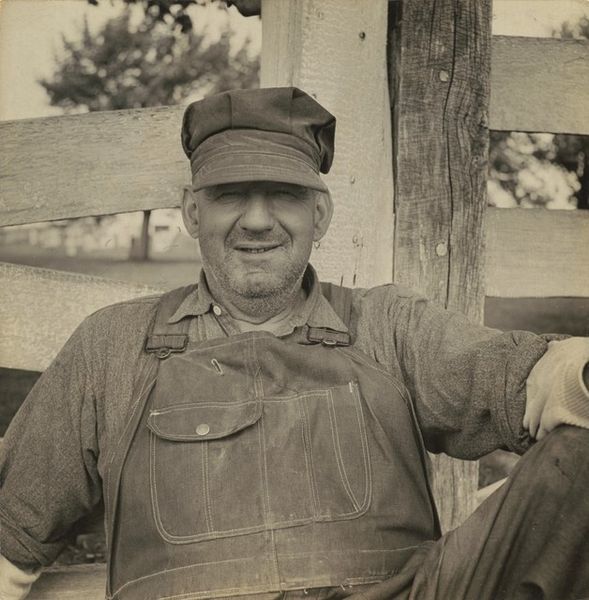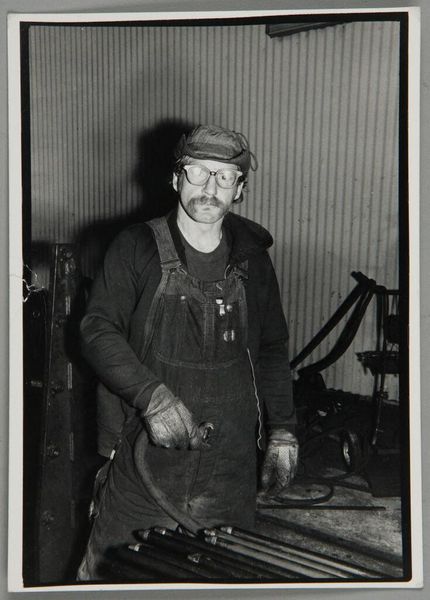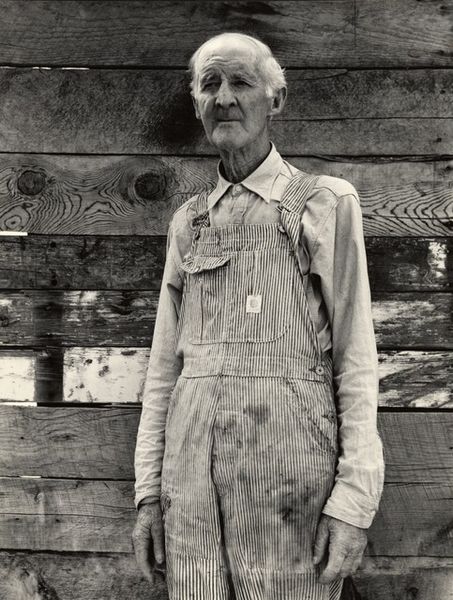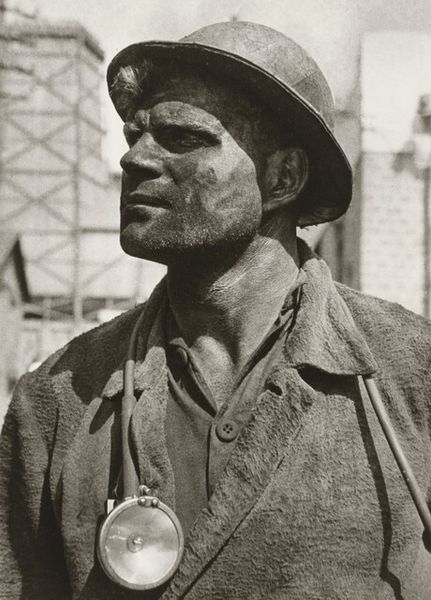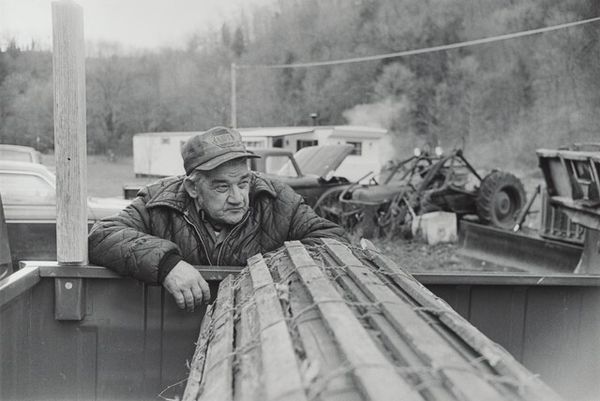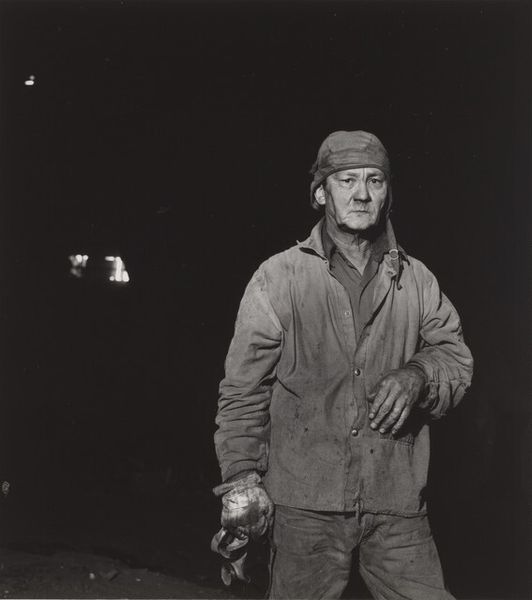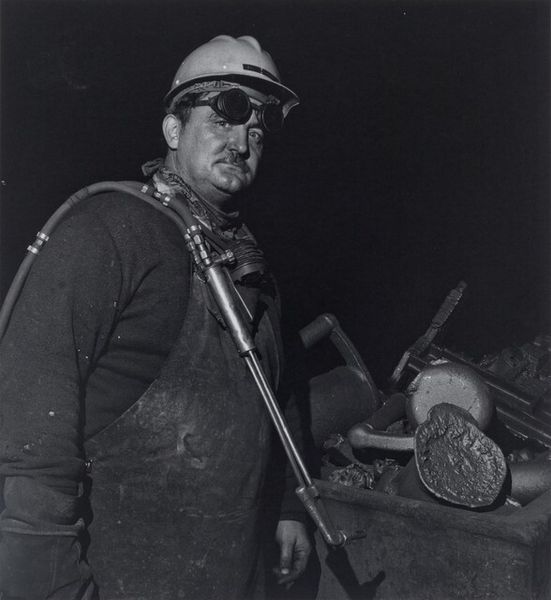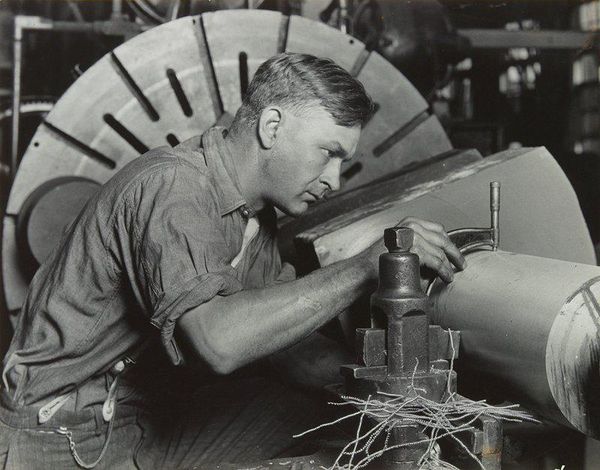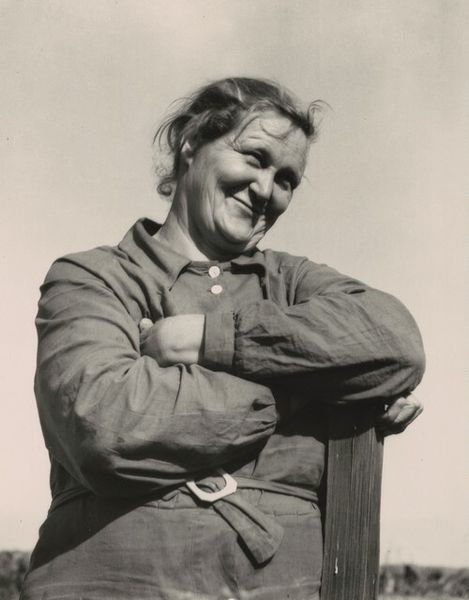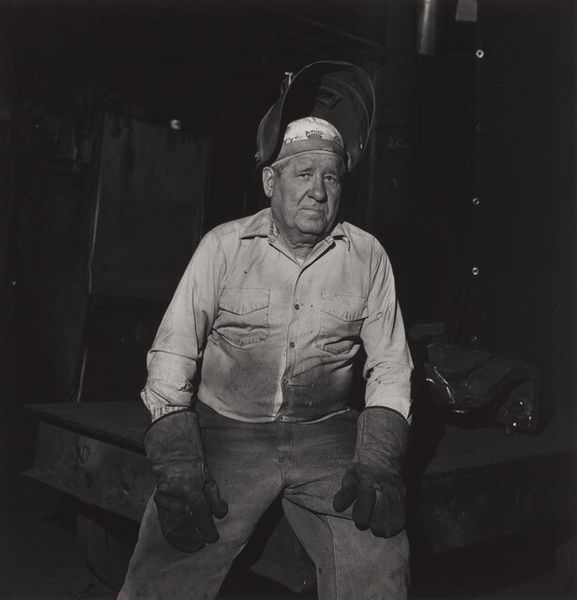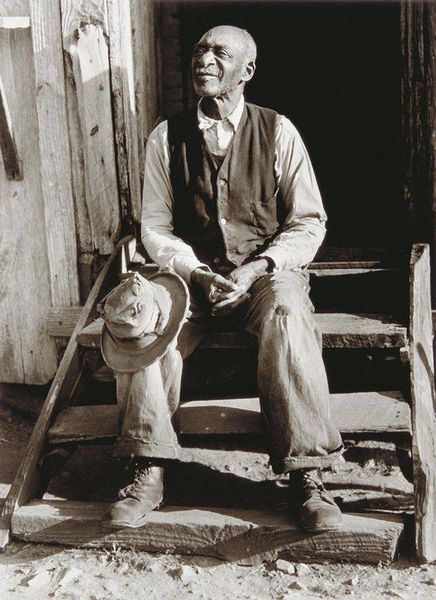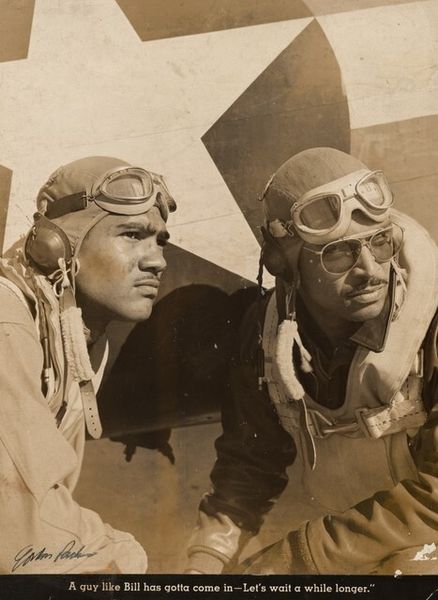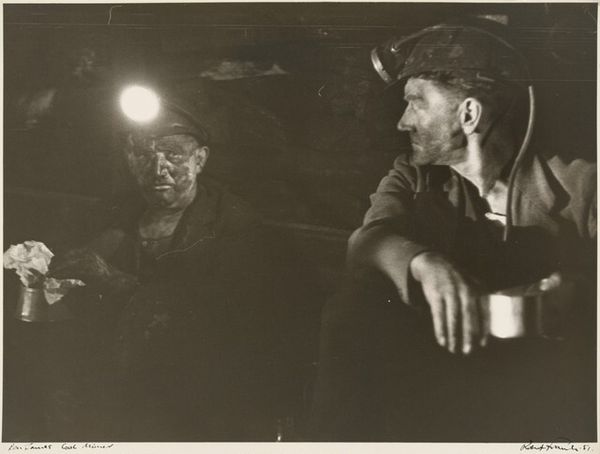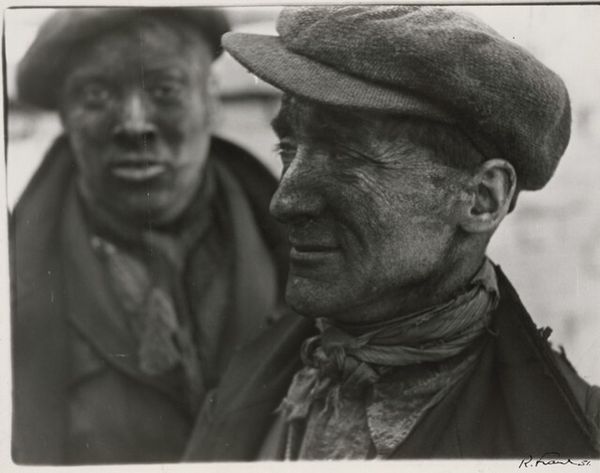
gelatin-silver-print, photography, gelatin-silver-print
#
portrait
#
gelatin-silver-print
#
portrait image
#
photography
#
gelatin-silver-print
#
ashcan-school
#
united-states
#
genre-painting
#
realism
Dimensions: 9 9/16 x 7 5/8 in. (24.29 x 19.37 cm) (image)10 x 8 in. (25.4 x 20.32 cm) (sheet)
Copyright: No Copyright - United States
Curator: This gelatin-silver print, entitled "Bob Butterfield", was created around the 1930s by the American photographer Lewis Hine, best known for his social documentary work. What is your first impression? Editor: There’s something so warm and solid about it. I feel a connection to this man—his overalls, the slight smile... I can almost hear the clanging of machinery and smell the oil from where I stand. He seems so at peace amidst the industry, so quietly confident. Curator: That industry is key. Hine dedicated much of his career to documenting the lives of laborers. It's not just a portrait of an individual; it's a portrait of labor itself. The monumental wheel looming behind him speaks to the scale of industrial work at that time, part of a whole new materiality in image making, that shifted our relationship with how industry operates. Editor: It makes me think about the process. Imagine Hine in the factory, composing this image. The noise, the smells... did he choose the location carefully, thinking of this wheel to represent American industry and Bob at its core? The light itself is almost liquid as if it had to force its way into every tiny corner. Curator: Absolutely, I agree with that; Hine consciously used photography as a tool for social reform. He was keenly interested in how working conditions shape identity and community. Editor: Bob looks like someone who has stories etched onto his face—each wrinkle a tale of the shop floor. To see how labor transformed men. It makes you wonder about their resilience, humor, humanity amidst all that hard work. Curator: And it brings up so many important considerations for me, about class and representation and exploitation through manufacturing—and the work itself. His photography encouraged society to reevaluate workers and industry, with an eye towards the production methods themselves. It is interesting to consider how he also elevated manual laborers through his chosen materials, elevating what was otherwise discarded or seen as common in popular image culture. Editor: Looking at his eyes... I almost feel a shared sense of what he wanted people to feel from this man. Seeing Bob, his perseverance. These types of pictures do a lot to bring home to everyday folks, or to create conversations around these common images. To transform ordinary workers into heroes with the use of simple silver gelatin. Curator: It’s hard not to get lost in the story embedded within. It allows us to engage with his experience. Thanks for unpacking this work with me! Editor: My pleasure! I leave with a greater understanding of the material costs it has took, as well as the importance of portraiture.
Comments
minneapolisinstituteofart almost 2 years ago
⋮
Lewis Hine was a documentary photographer, educator, and social reformer. Trained in sociology, Hine taught at the progressive Ethical Culture School in New York City before turning his attention to photography. As a photographer for the National Child Labor Committee (NCLC), Hine traveled the United States to document children in unsafe working conditions in factories, mines, fields, and city streets. Over ten years, he created an indelible record of the human cost of an exploitative labor market, documenting the tired faces of children at the end of their shifts, or even children mutilated by industrial machinery. These disturbing photographs were used in publications and presentations created by Hine and the NCLC, and ultimately promoted sweeping policy changes designed to protect children.
Join the conversation
Join millions of artists and users on Artera today and experience the ultimate creative platform.
